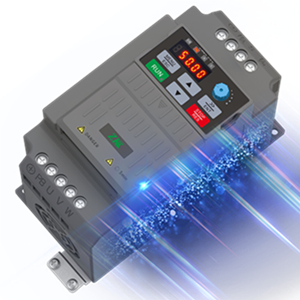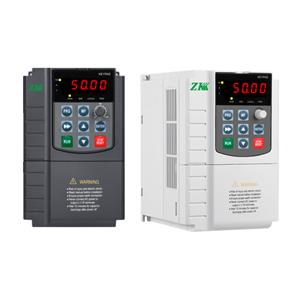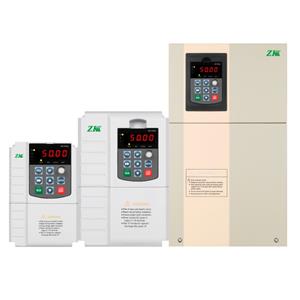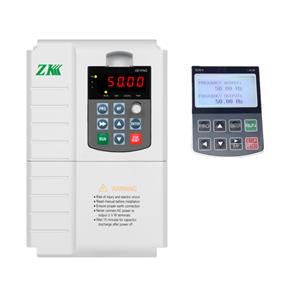Integration Strategy of PLC and VFD in Intelligent Manufacturing Systems
Intelligent manufacturing systems represent the pinnacle of modern industrial innovation, harnessing advanced technologies such as automation, data analytics, and machine learning to revolutionize production processes. At the heart of many of these systems lies the integration of Programmable Logic Controllers (PLCs) and Variable Frequency Drives (VFDs)—two essential components that together enable flexible, efficient, and reliable manufacturing. Programmable Logic Controllers (PLCs) act as the "brain" of automation, orchestrating machines and processes, while Variable Frequency Drives (VFDs) serve as precision controllers, regulating motor speed and torque. This article delves into the strategies for integrating these systems, highlighting their critical roles in intelligent manufacturing environments.
The Roles of Programmable Logic Controllers (PLCs) and Variable Frequency Drives (VFDs) in Intelligent Manufacturing
Programmable Logic Controllers (PLCs) are robust, industrial-grade computers designed to execute control logic, monitor inputs and outputs (I/O), and interface with sensors, actuators, and production equipment. Programmable Logic Controllers (PLCs) play a pivotal role in automating sequential processes, ensuring error-free operations, and enabling logic-driven decision-making.
Variable Frequency Drives (VFDs), by contrast, are power electronics devices used to control the speed of AC motors by varying their frequency and voltage. This precise motor control delivers key advantages, including energy savings, reduced mechanical stress, and improved performance. Applications such as conveyor systems, robotic arms, pump systems, and HVAC setups rely heavily on Variable Frequency Drives (VFDs) for their operational efficiency.
The integration of Programmable Logic Controllers (PLCs) and Variable Frequency Drives (VFDs) in intelligent manufacturing systems brings seamless coordination, real-time communication, and optimized process control. The synergy between Programmable Logic Controllers (PLCs) and Variable Frequency Drives (VFDs) allows manufacturers to enhance energy efficiency, maintain product quality, and respond dynamically to changing production demands.
Strategies for Effective Integration
Successful integration of Programmable Logic Controllers (PLCs) and Variable Frequency Drives (VFDs) requires a well-defined approach to ensure scalability, modularity, and streamlined communication. Key strategies include:
1. Selection of Standard Communication Protocols:
Integration hinges on reliable industrial communication protocols that facilitate fast and accurate data exchange between Programmable Logic Controllers (PLCs) and Variable Frequency Drives (VFDs). Popular protocols include Modbus, PROFINET, Ethernet/IP, and PROFIBUS. These protocols enable control commands, feedback signaling, diagnostics, and system monitoring. Selecting a protocol compatible with the network infrastructure and production requirements is essential for ensuring smooth operation and interoperability.
2. Choosing Between Centralized and Decentralized Architectures:
• Centralized Integration: In a centralized system, the Programmable Logic Controller (PLC) functions as the primary controller, managing multiple Variable Frequency Drives (VFDs) and coordinating their operation. This approach is ideal for applications requiring synchronized motor control, such as multi-axis machinery or conveyor systems.
• Decentralized Integration: In decentralized architectures, each Variable Frequency Drive (VFD) maintains a degree of autonomy, communicating critical data to the Programmable Logic Controller (PLC). With built-in intelligence, modern Variable Frequency Drives (VFDs) can independently handle simpler tasks, reducing the Programmable Logic Controller’s (PLC’s) workload. This strategy is better suited for systems with distributed control needs.
3. Utilization of Unified Programming Tools:
Integrated development environments (IDEs) such as Siemens TIA Portal or Rockwell Automation’s Studio 5000 simplify the engineering process by allowing the configuration of both Programmable Logic Controllers (PLCs) and Variable Frequency Drives (VFDs) within a single software interface. This unified approach reduces complexity, enhances troubleshooting, and ensures consistency in workflows.
4. Energy Management Integration:
Intelligent manufacturing places a strong emphasis on energy efficiency, especially in motor-heavy operations. By integrating Variable Frequency Drives (VFDs) with Programmable Logic Controller (PLC)-based energy monitoring systems, manufacturers can dynamically optimize motor speeds to match production demands, minimizing energy waste during low-load conditions.
5. Real-Time Monitoring and Feedback:
Advanced integration enables real-time monitoring and diagnostics for both Programmable Logic Controllers (PLCs) and Variable Frequency Drives (VFDs). For instance, Variable Frequency Drives (VFDs) can relay critical information such as motor temperature, load, and operational status, which Programmable Logic Controllers (PLCs) can leverage to make immediate decisions or initiate safety protocols. This helps ensure uninterrupted operations and efficient system management.
6. Compatibility with Industry 4.0 Principles:
To align with Industry 4.0 requirements, integrating Programmable Logic Controllers (PLCs) and Variable Frequency Drives (VFDs) should embrace IoT-enabled features and digitalization. Ethernet-based communication allows remote monitoring, cloud connectivity, and data analysis, enabling predictive maintenance systems that minimize downtime by identifying potential failures in advance. Smart Variable Frequency Drives (VFDs) equipped with IoT functionalities can further enhance the adaptability and intelligence of the system.
Benefits of Integrating Programmable Logic Controllers (PLCs) and Variable Frequency Drives (VFDs)
The integration of Programmable Logic Controllers (PLCs) and Variable Frequency Drives (VFDs) into intelligent manufacturing systems delivers numerous advantages:
• Improved Control: Precise motor regulation ensures consistent product quality and enhances overall system performance.
• Reduced Energy Consumption: Dynamic speed and torque control significantly lower energy usage, reducing operational costs.
• Enhanced Reliability: Real-time feedback and diagnostics increase equipment reliability and enable predictive maintenance, minimizing unplanned downtime.
• Scalability and Flexibility: Integrated systems can grow and adapt to shifting production requirements, providing future-proof solutions.
Challenges and Mitigation Strategies
Though the benefits are substantial, certain challenges may arise during integration:
1. Compatibility Issues: Ensuring that Programmable Logic Controllers (PLCs) and Variable Frequency Drives (VFDs) support the selected communication protocols and standards is critical. Careful device selection and testing can resolve compatibility concerns.
2. Complex Configuration: Setting up advanced integration systems can be intricate, but the use of unified programming tools simplifies the process while reducing human error.
3. Cybersecurity Risks: Connecting Programmable Logic Controllers (PLCs) and Variable Frequency Drives (VFDs) to IoT platforms introduces vulnerabilities to cyber threats. Implementing robust cybersecurity measures—such as encrypted communication, firewalls, and regular system updates—can mitigate risks and secure operations.
The integration of Programmable Logic Controllers (PLCs) and Variable Frequency Drives (VFDs) forms the backbone of intelligent manufacturing systems, combining logical process control with dynamic motor regulation. Together, Programmable Logic Controllers (PLCs) and Variable Frequency Drives (VFDs) enable manufacturers to achieve higher productivity, greater energy efficiency, and enhanced system reliability. By adopting clear and well-defined integration strategies, businesses can develop resilient, scalable systems that align with Industry 4.0 goals. As technology advances, these combined systems will continue to play a transformative role in shaping the future of manufacturing.




